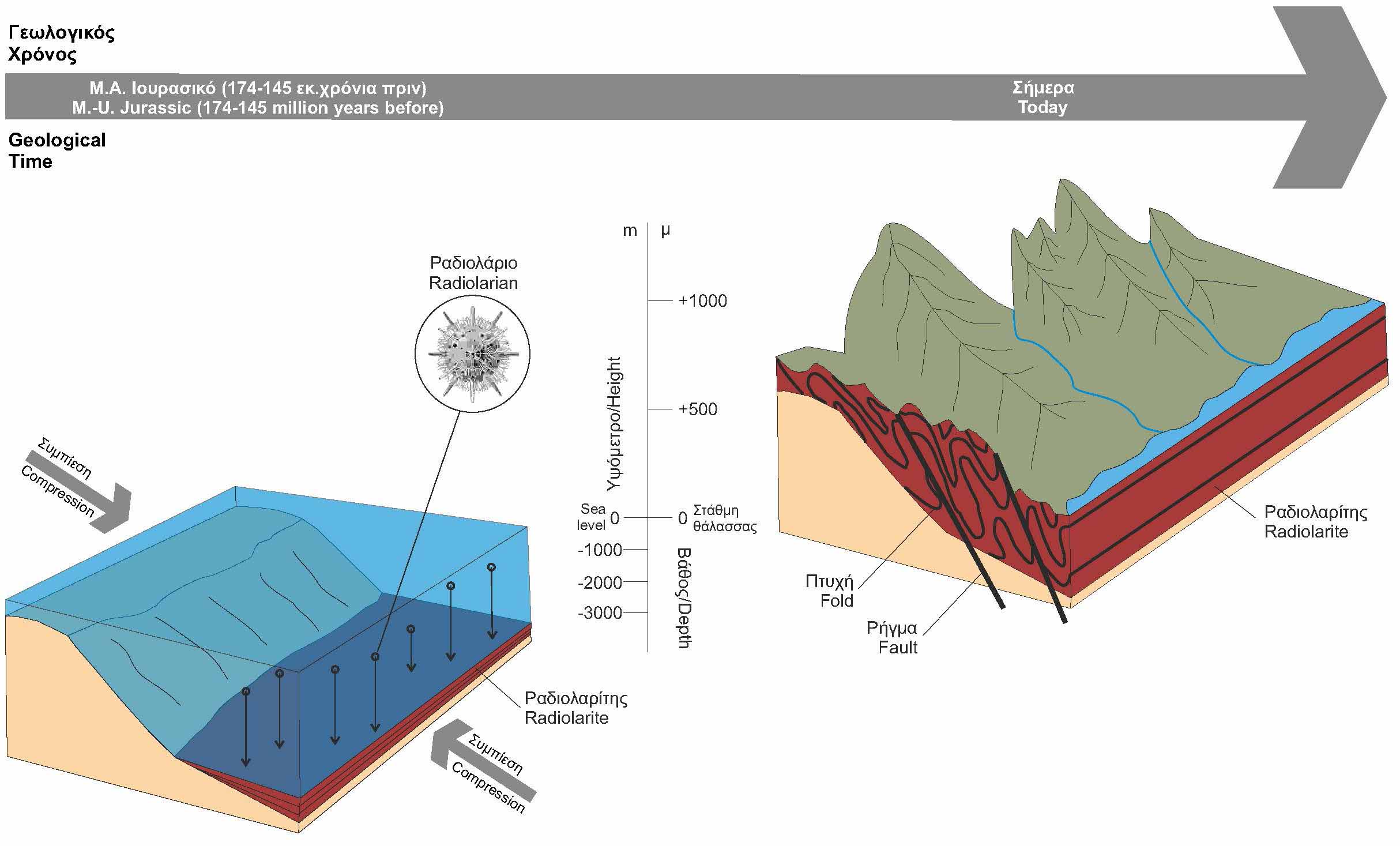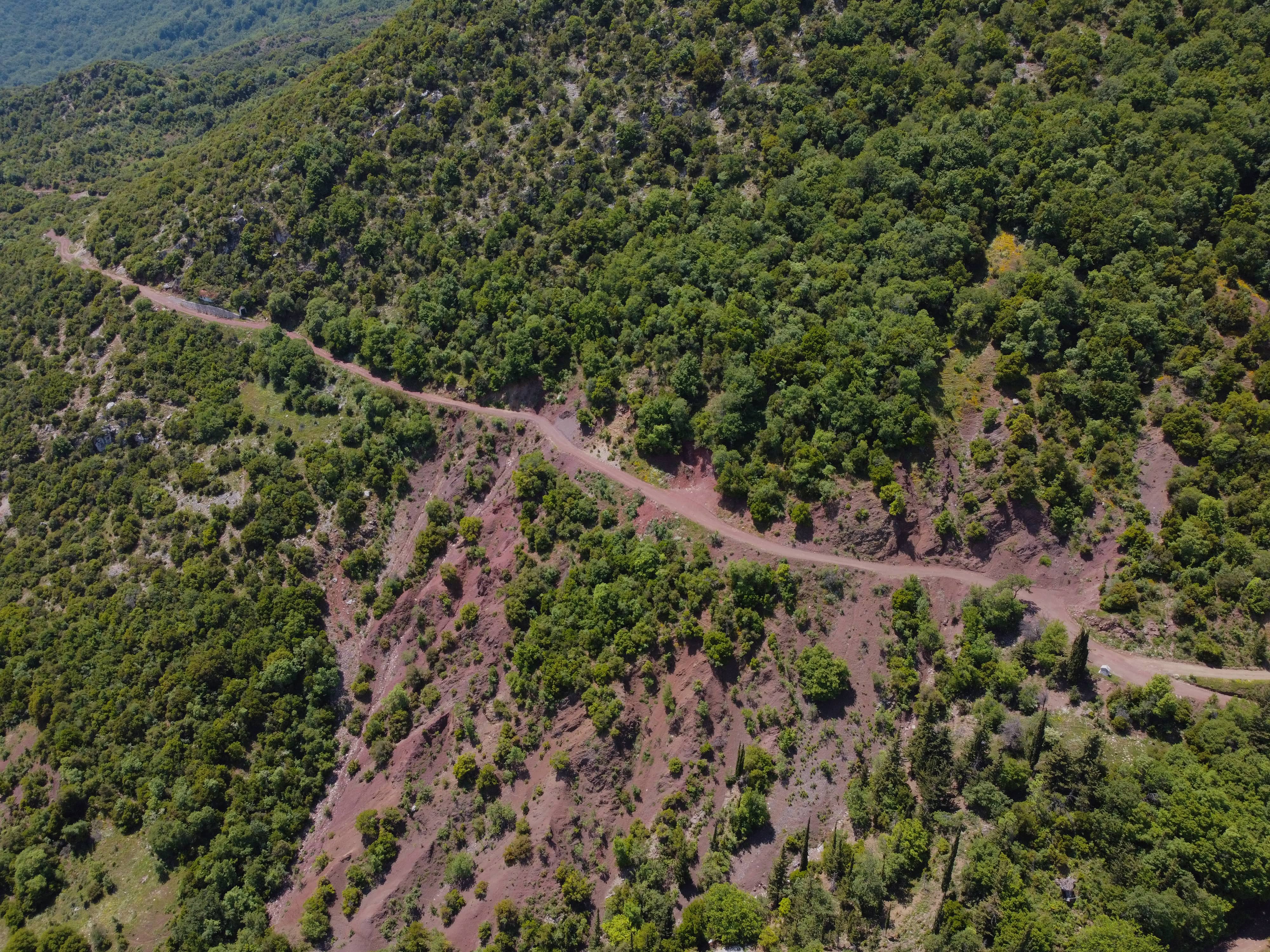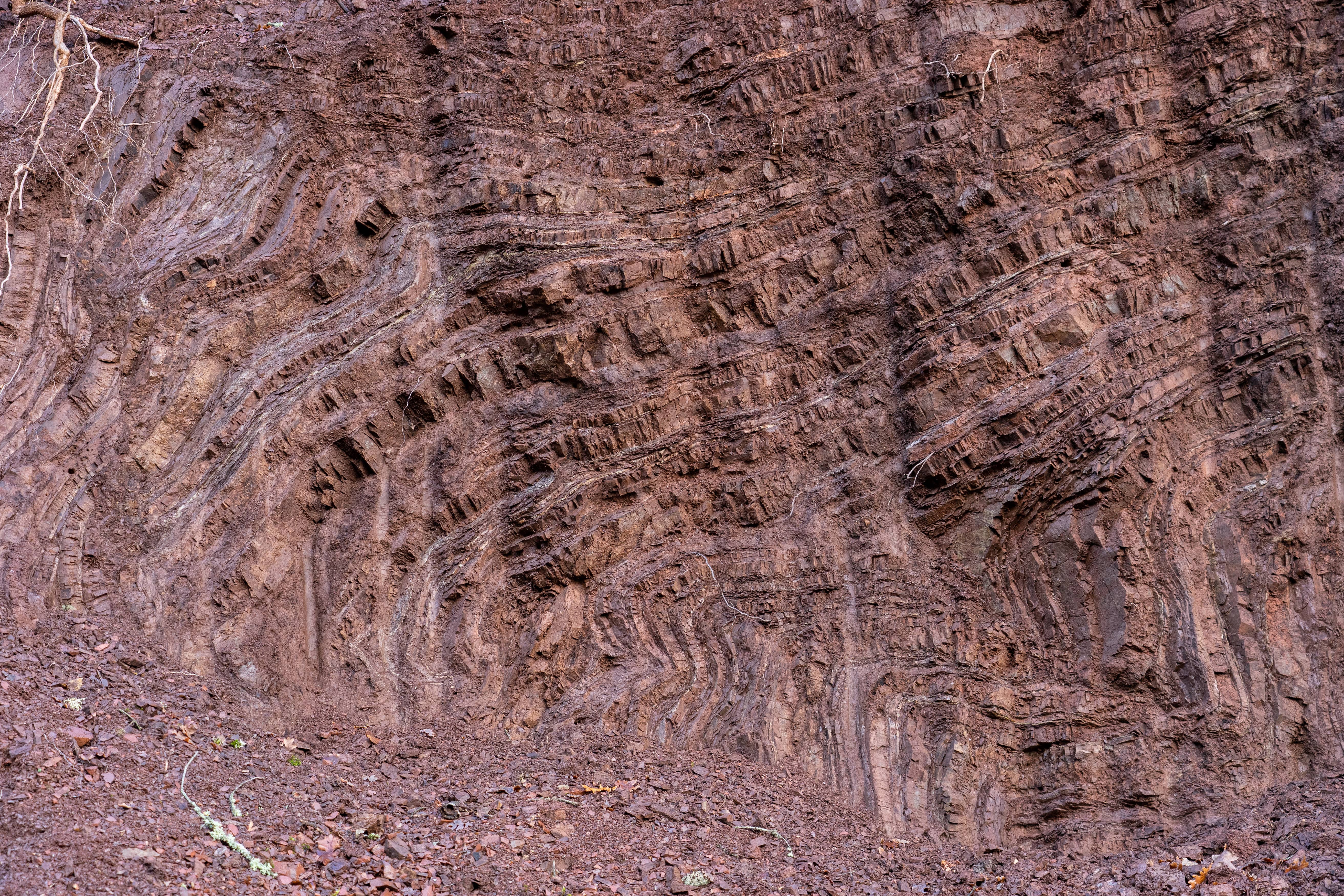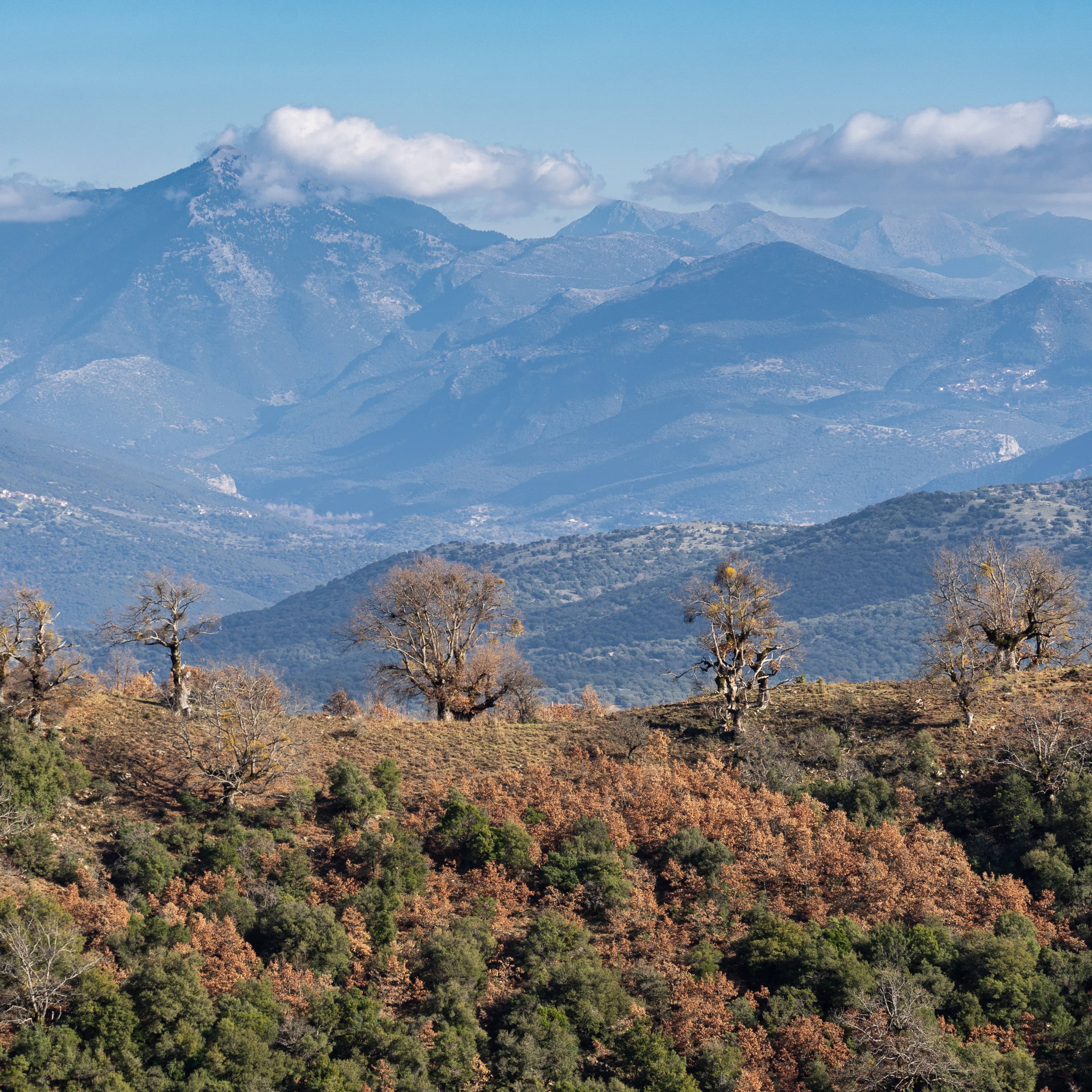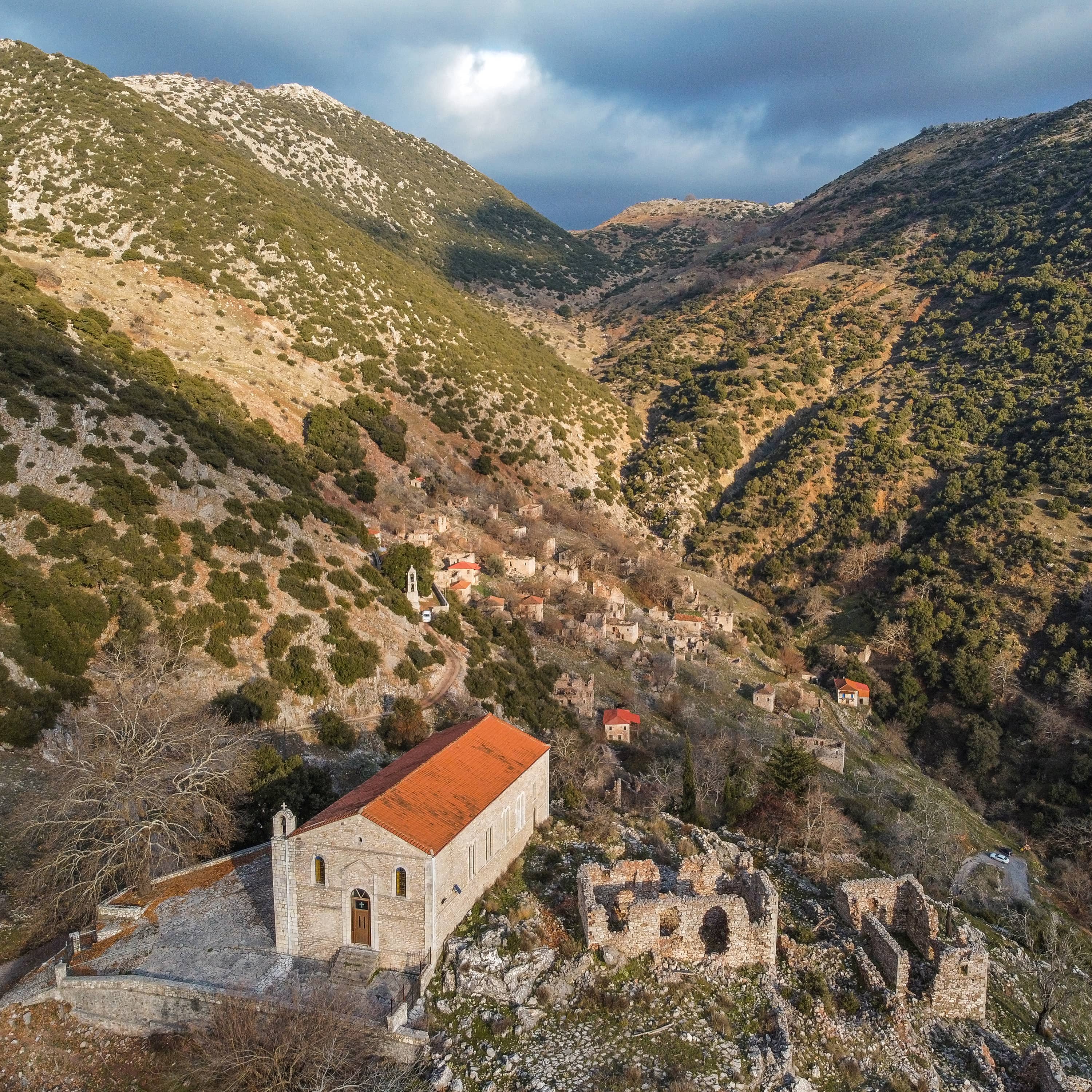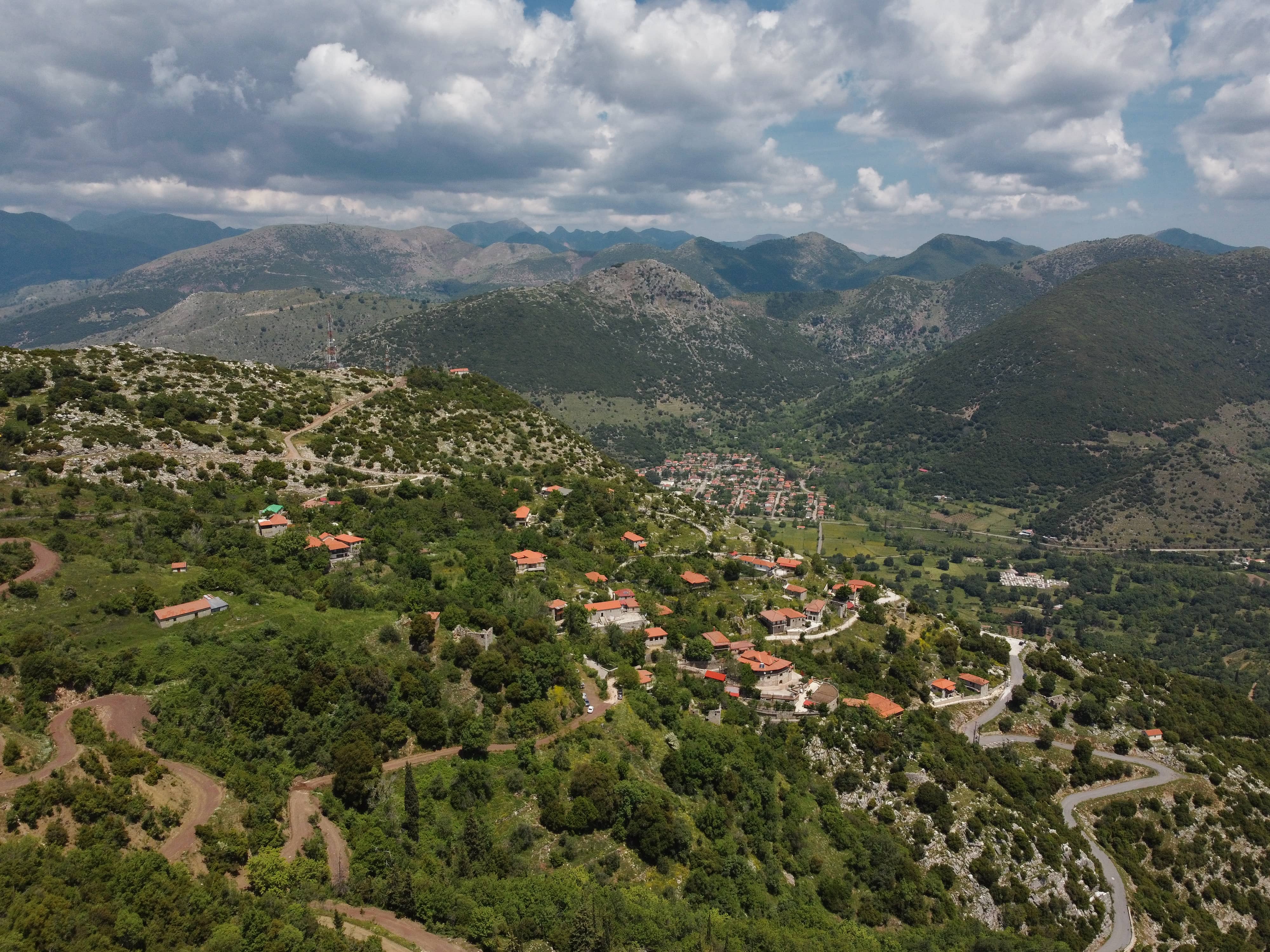WALKING ACROSS THE OCEAN
Vesini is a village with a long history since it is known at least from 1700. Its name derives from the ancient Greek word “βήσσα” (pronounced visa), which means a gorge, or a valley covered with dense vegetation. This is exactly the case with the first location of the village at Vritsoulia site. In Vesini, rocks called radiolarites, that were formed in the deep sea many millions of years ago, appear.
Geodiversity
About 174-145 million years before, there was a deep ocean, Pindos Ocean, at the bottom of which characteristic deep sea sediments were accumulated. These sediments have been formed at depths greater than 3 to 4 km. They consist of muddy layers that alternate with green, red or whitish fine grained siliciclastic rocks called cherts, and limestone layers. At even greater depths red radiolarites are formed. Both rock groups have a thickness of no more than 100 m each.
Radiolarites are rocks that have been formed by the accumulation at the deep-sea bottom of siliceous microorganism shells. These are called radiolarians, from which the rock was named after. Radiolaria are not bigger than 1 mm. After their death, their shells accumulate at the bottom of the deep sea in great quantities. As the geologic time passes, they get compressed by the weight of the sediments that lie on top of them, and they are compacted finally forming very hard rocks.
As the area of the geopark has undergone great compression due to the collision of the African plate underneath the Eurasian one (happening south of Crete), the rocks of this geosite have been tilted, broken (forming faults), folded and finally uplifted reaching high altitudes. Thus, today the visitor can learn about the formation of rocks in great sea depths standing in these high altitudes and admiring both the rocks and the alpine topography.
Biodiversity
The Geosite is located near the Special Protection Area (SPA) for avifauna “OROS ERYMANTHOS” (GR2320012). Important bird species for this area are the Western Rock Nuthatch (Sitta neumayer) and the Rock Bunting (Emberiza cia). Near the Geosite the unique “forest of Mparmpous” with the centuries-old chestnut and oak trees can be found, which has been designated as a natural monument and consists of a refuge for many birds and other animals.

